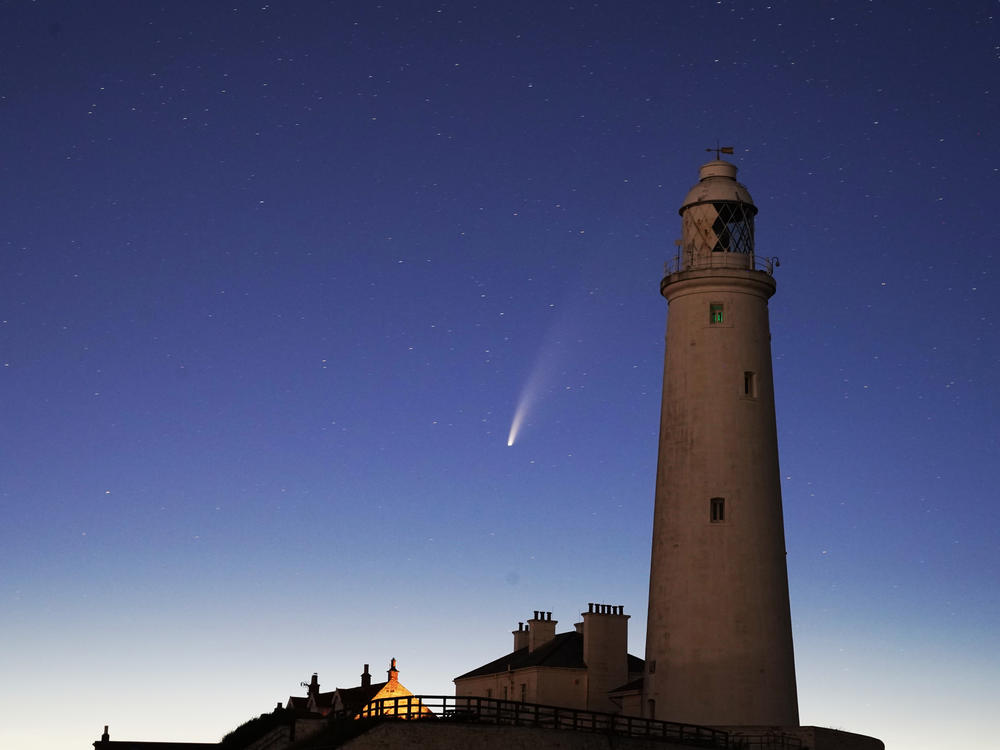Section Branding
Header Content
Good News: This Comet Won't Cause A Mass Extinction In 2020. Also, It's Really Pretty
Primary Content
The first thing to know about a new comet that has appeared in the evening sky is that it's one big ice ball: about 5 kilometers (3.1 miles) across.
"Just to put it into context, about 65 million years ago there was an asteroid or a comet that was thought to have caused the extinction of the dinosaurs," says astronomer Amy Mainzer. "That object is thought to have been about 5 to 10 kilometers across."
Mainzer is principal investigator for a NASA mission known as NEOWISE that is seeking to spot comets and asteroids that could wipe out life as we know it on Earth.
And NEOWISE did spot this comet in March.
And 2020 has been a terrible year so far.
But don't worry, she says: "It's definitely not going to hit the Earth."
Instead, the comet, known officially as C/2020 F3 (NEOWISE) — or just comet Neowise for short — is providing an unexpected bright spot in the lives of quarantined astronomers. It came from a dark part of the solar system known as the Oort Cloud — an icy graveyard billions of miles out that is filled with ancient comets and asteroids. It shot into the inner solar system, and astronomers watched as it passed the sun at a distance closer than the planet Mercury.
"Of course, the question we asked was, 'Will it survive? Or is the sun going to melt it like an ice cube on a Tucson summer day?' " says Mainzer, a professor at the University of Arizona.
It did survive, thanks in large part to its size, and is now passing near Earth. Mainzer says the wanderer appears to be very rich in carbon, making it almost sooty in appearance if you were up close. But the sun's rays are making it visible, even to the naked eye.
"It looks at first like a little fuzzy dot, and then you'll notice that it has this long streaky tail sticking off of it," she says.
Until this week, the comet was visible only to early birds willing to rise before dawn. But now it's appearing in the evening, mainly in the Northern Hemisphere. To find it, go outside just after dark and look to the northwest, below the Big Dipper. It appears close to the horizon right now, but it will start to rise higher in the sky in the coming days. Here's more on how to find it.
Mainzer says she can't predict how long the comet will remain visible. Its brightness depends on its distance from the sun and Earth, as well as its composition. But while it's here, she finds it to be comforting to look at.
"In spite of the really difficult times right now, it's a reminder that we're part of a bigger universe," she says. "And there are some really wonderful and beautiful things in it."
Copyright 2020 NPR. To see more, visit https://www.npr.org.

